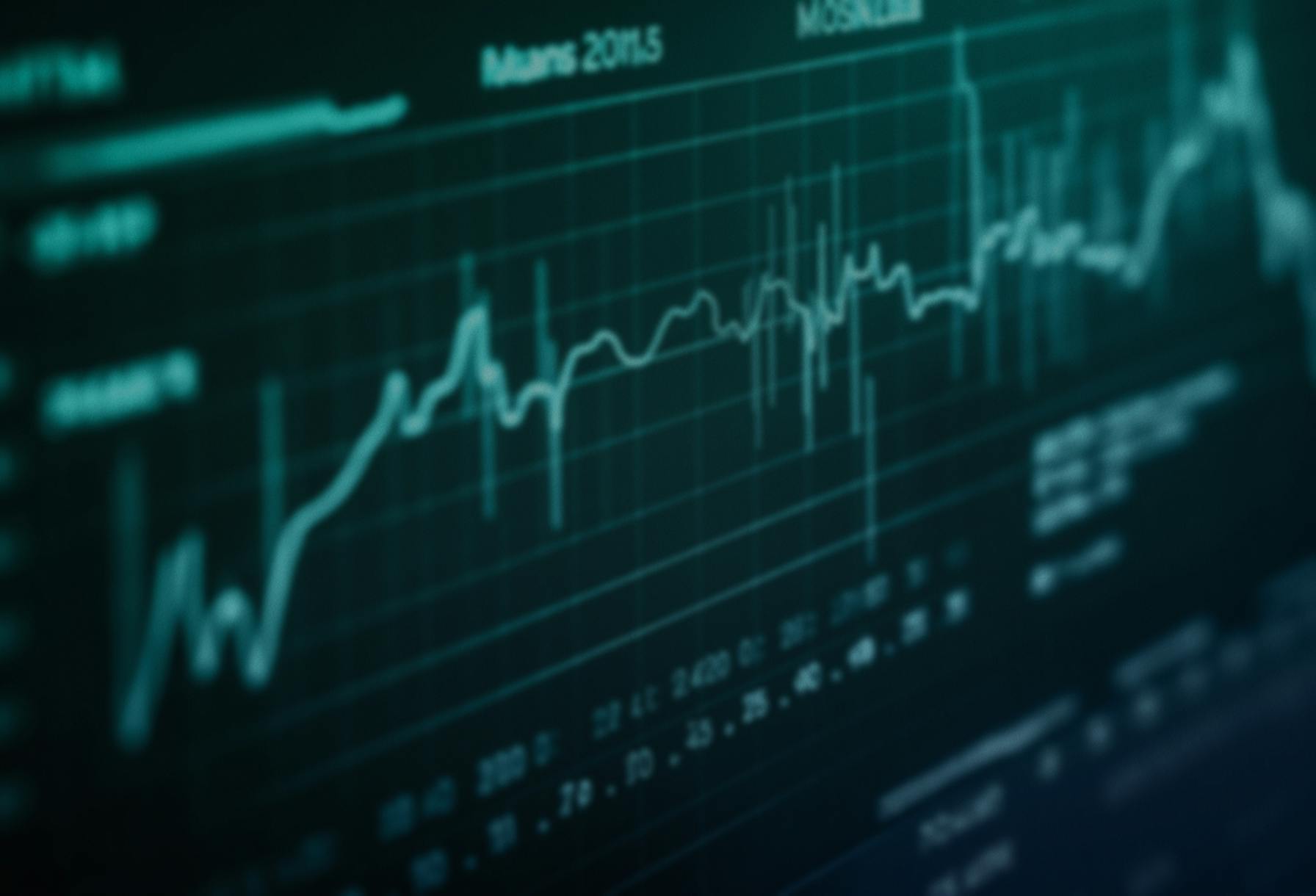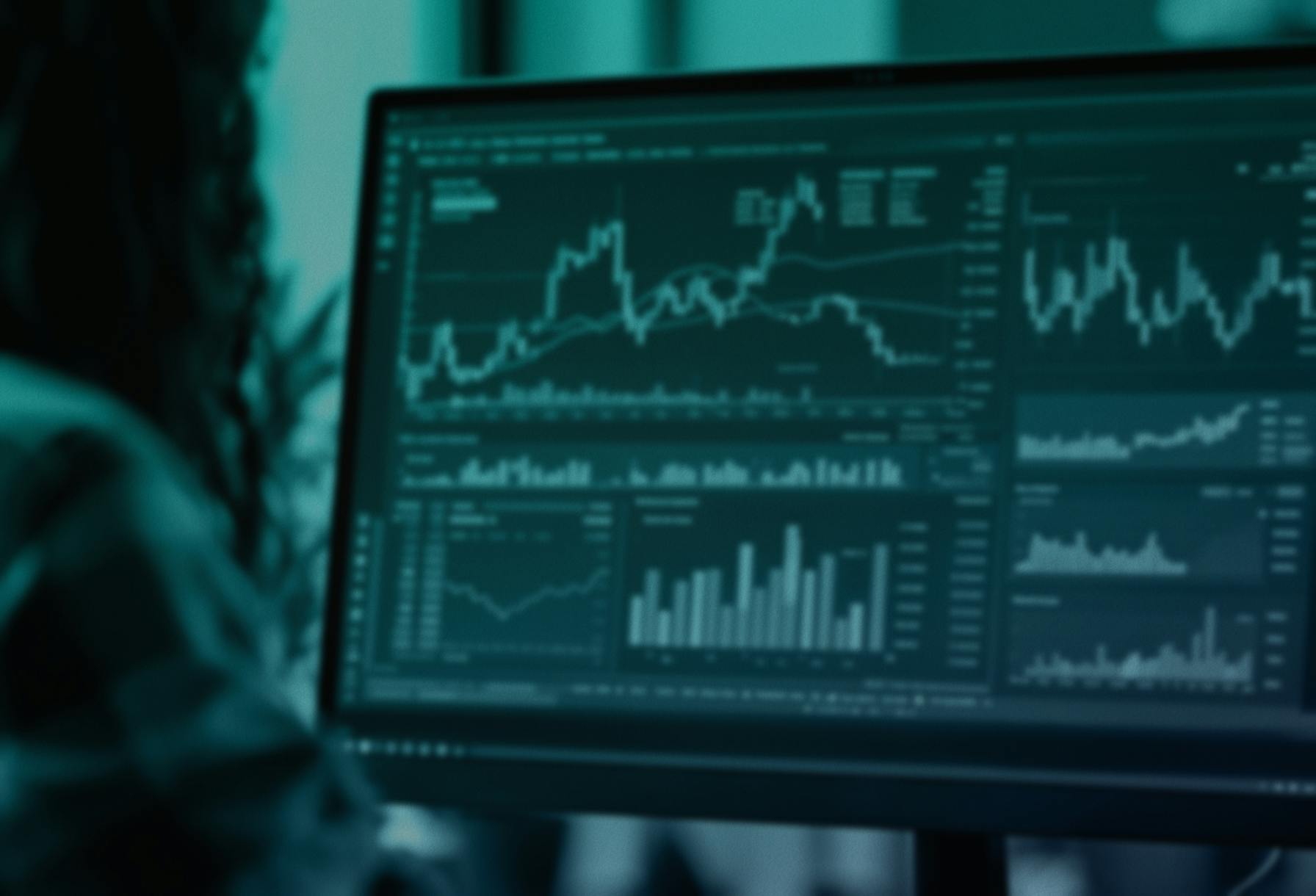
- All
- Tools
- Analytics
- Technical Analysis
- Trading
- Blockchain
- DeFi
- Guides
- Company News
- Educational
- Opinion
- Price Predictions
- Market News
- News
- Trading cases
- Practical guides
- Exchanges
- Trading signals
- Cryptocurrency
- Crypto bots
- Other
Become a crypto master
Learn everything about crypto,
trading and bots

Real-time Market Analysis: Complete Guide to AI Trading Systems Implementation
Learn how to implement AI trading systems for real-time market analysis in crypto. Explore AI bots, strategies, and platforms like 3Commas for automated trading.
- Introduction
- Understanding Real-Time Market Analysis in Crypto
- The Role of AI in Real-Time Crypto Trading
- Implementing an AI-Based Crypto Trading Bot
- Core Components of AI Trading Bots
- Choosing Between Prebuilt Bots and Custom Solutions
- Case Study: A mid-sized quant fund built a custom auto trading bot using a combination of on-chain alerts and NLP sentiment signals. When backtested across BTC/USDT, the model showed a 9.3% gain in net PnL versus traditional MACD strategies over 4 months.
- Real-Time Signal Generation & Processing
- Practical AI Trading Strategies with Real-Time Insights
- Scalping and High-Frequency Trading (HFT)
- Example: A bot operating on Bybit leveraged real-time order book imbalance signals with a reinforcement learning model and achieved a 62% win rate over 30,000 trades.
- Grid Trading & DCA Bots
- Arbitrage and Spread Exploitation
- Example: A trading desk used a crypto arbitrage bot to execute 0.3% spreads between Binance and Kraken on stablecoin pairs during high inflow events, netting consistent daily profits with near-zero drawdown.
Start Trading on 3Commas Today
Get full access to all 3Commas trading tools with free trial period

Introduction
In today’s fast-moving crypto markets, traders who can react in real time to shifting market dynamics have a clear edge. The window of opportunity for profitable trades often closes in seconds, especially during periods of high volatility. Manual analysis simply can’t keep up. This is where artificial intelligence (AI) comes in—automating real-time data processing, generating actionable insights, and executing trades with precision.
This guide explores how real-time market analysis is implemented using AI trading systems, focusing on practical strategy, system design, and platforms like 3Commas that support intelligent automation. Whether you’re optimizing a DCA bot or building a custom AI pipeline, the content here will help you make informed decisions.
Understanding Real-Time Market Analysis in Crypto
What Is Real-Time Market Analysis?
Real-time market analysis involves the continuous evaluation of trading data as it becomes available. Unlike traditional methods that rely on historical chart reviews, real-time analysis parses live streams of market data to surface trends, anomalies, and entry/exit signals with minimal delay.
In crypto markets, where prices are highly sensitive to sentiment, macro news, and liquidity shifts, even milliseconds of delay can significantly impact trade performance. This makes the ability to process, analyze, and act on real-time data not just beneficial, but essential. AI trading bots and automated crypto trading bots are increasingly used to keep pace with this demand.
Key Data Points for Crypto Traders
A robust real-time system monitors multiple streams simultaneously:
- Price action: Candlestick formations, microstructure shifts, price-volume divergence.
- Order book depth: Bid-ask spreads, liquidity walls, iceberg orders.
- Trade volume: Sudden volume spikes often precede breakouts.
- Sentiment feeds: Twitter trends, Reddit sentiment, Telegram groups.
- On-chain data: Whale wallet movements, staking patterns, token flow.
Traders leveraging these signals gain sharper context for decision-making, especially when fused into a cohesive view using AI algorithms.
In practice, most professional-grade bots prioritize market depth and volume imbalance alongside high-frequency sentiment spikes. For instance, a sentiment anomaly paired with low ask-side liquidity can signal a strong upward move. AI trading bots capable of analyzing market data at this level of granularity are quickly becoming essential tools in the trading process.
The Role of AI in Real-Time Crypto Trading
How AI Enhances Market Analysis
AI systems can ingest and interpret vast datasets far beyond human capability. They can uncover hidden correlations, optimize signal-to-noise ratios, and dynamically adjust their behavior based on changing market regimes. This gives traders:
- Speed: Instantaneous analysis of tick-level data.
- Pattern recognition: Identification of setups missed by human eyes.
- Adaptability: Learning from market shifts without hard-coded rules.
Compared to manual TA, AI provides both scale and sophistication. These systems allow retail investors and experienced traders alike to use advanced trading tools with minimal latency. Many crypto trading platforms are now integrating AI for crypto trading and providing access to free trading bots with various trading strategies. Maybe most importantly though, it allows traders to expand their list of target markets to analyze. The bigger exchanges offer over 1,000 coin pairs, and it’s impossible for an individual to take a deep look at all of them. AI absolutely can scan all those markets and look for the conditions that represent excellent trading opportunities.
Machine Learning Models for Prediction
Real-time prediction relies on different ML models depending on the objective:
- Supervised models like XGBoost or Random Forests are used to classify bullish/bearish setups.
- Unsupervised learning helps detect market regime changes or anomalies.
- Reinforcement learning (RL) enables bots to adapt strategies over time by optimizing cumulative rewards based on market feedback.
- Deep learning models (e.g., LSTM networks) are adept at interpreting sequential data like candlestick patterns or order flow.
Example: An AI bot using LSTM trained on 1-minute ETH/USDT candles and funding rates from Binance Futures successfully reduced drawdown by 18% during volatile macroeconomic news events compared to static RSI-based bots.
In crypto, the non-stationary nature of price action makes adaptive models crucial. AI crypto trading bots now span multiple exchanges and asset classes, extending their use into futures bots and cross-platform execution environments.
Implementing an AI-Based Crypto Trading Bot
Core Components of AI Trading Bots
An effective real-time trading bot has several integrated parts:
- Data ingestion engine: Interfaces with APIs to collect live market, sentiment, and on-chain data.
- Feature engineering layer: Transforms raw data into model-ready inputs.
- Signal generation engine: Uses trained models to predict trade direction or volatility.
- Execution module: Places and manages orders using exchange APIs.
- Risk control system: Enforces limits, stops, and capital allocation rules.
These components must be designed for low latency and modularity. For example, bots using Kafka for real-time data pipelines often outperform those using batch-based cron schedulers. In the realm of automated crypto trading bots, efficiency in execution architecture is key to performance.
Automated crypto trading bots must also support cloud-based deployment for 24/7 access, and robust security measures to protect credentials and capital.
Choosing Between Prebuilt Bots and Custom Solutions
Prebuilt AI bots, such as those available on platforms like 3Commas, offer quick access to automation with proven strategies. They're ideal for traders focused on execution, but their granular configuration options leave the door open for experimentation.
Custom bots, however, provide greater control over strategy development, model tuning, and infrastructure. They suit traders with data science and dev resources who want to test edge cases or explore proprietary indicators. Given the advancements in bot functionality from companies like 3Commas, many institutional traders are choosing to go with reliable, proven bots that can flawlessly execute based on inputs from custom signals, rather than designing their own bot from the ground up.
Case Study: A mid-sized quant fund built a custom auto trading bot using a combination of on-chain alerts and NLP sentiment signals. When backtested across BTC/USDT, the model showed a 9.3% gain in net PnL versus traditional MACD strategies over 4 months.
Real-Time Signal Generation & Processing
Types of Signals Used by AI Bots
- Technical indicators: AI can enhance traditional signals like RSI, MACD, or Bollinger Bands by dynamically adjusting thresholds based on regime detection.
- Sentiment signals: Natural language processing (NLP) models extract polarity and intensity from social media, financial news, and forums.
- On-chain analytics: Analyzing metrics like active addresses or token velocity in real time adds a fundamental layer to technical setups.
Combining these sources increases accuracy and robustness. Successful traders rely on these trading signals to make informed decisions across diverse trading strategies. AI crypto bots often combine all three categories to filter false positives and manage entry timing more precisely.
Signal Processing Pipelines
After data collection, the AI system must:
- Normalize inputs to remove scale bias.
- Reduce noise with smoothing techniques.
- Detect outliers and correct anomalies.
- Batch and prioritize signals based on confidence scores.
Low latency queues like RabbitMQ and real-time databases like Redis are often used in signal handling to ensure timely response. These infrastructures improve the efficiency of automated trading bots operating in highly volatile market conditions.
Practical AI Trading Strategies with Real-Time Insights
Scalping and High-Frequency Trading (HFT)
AI bots excel at micro-opportunity detection, allowing them to exploit inefficiencies for small, frequent profits. Real-time order book analysis, latency arbitrage, and quote stuffing detection are used in this domain.
Example: A bot operating on Bybit leveraged real-time order book imbalance signals with a reinforcement learning model and achieved a 62% win rate over 30,000 trades.
Grid Trading & DCA Bots
AI can optimize grid spacing based on real-time volatility or momentum indicators. In DCA strategies (Dollar Cost Averaging), bots adjust position size dynamically depending on order book conditions or price momentum, rather than using static intervals.
Grid trading bots are particularly useful in sideways markets, where volatility is high but directional momentum is limited. Tools like the infinity grid bot allow for strategic range rebalancing over time. For traders managing all your exchange accounts in one place, using a unified platform like 3Commas can streamline execution.
Arbitrage and Spread Exploitation
AI bots track price discrepancies across exchanges and execute arbitrage trades instantly. This includes:
- Triangular arbitrage (e.g., BTC-ETH-USDT)
- Inter-exchange spreads
- Futures-spot basis trading
Example: A trading desk used a crypto arbitrage bot to execute 0.3% spreads between Binance and Kraken on stablecoin pairs during high inflow events, netting consistent daily profits with near-zero drawdown.
These strategies benefit from AI’s ability to analyze market data, optimize trade automation, and execute trades efficiently even in rapidly shifting market conditions.
FAQ
The best bot depends on your goals. For ease of use, 3Commas DCA and Grid bots paired with signal integrations are a strong choice. For customization, open-source Python frameworks or custom-built ML models offer flexibility.
They can identify patterns and statistical edges, but not guarantee future movements. Their strength lies in probabilistic modeling and rapid adaptation.
It depends on the platform and your risk settings. Reliable platforms like 3Commas offer strong safety controls, but no system is immune to extreme market events.
You can use webhook integrations, TradingView alerts, or custom scripts via the 3Commas API. Signal bots must be compatible with the exchange and strategy used.
Grid bots operate across defined price ranges with limit orders. DCA bots buy in tranches as price moves, reducing entry risk over time.
Yes, as long as they follow API usage rules. However, some high-frequency strategies may be restricted.
Use metrics like Sharpe ratio, win/loss profile, max drawdown, and backtesting vs. forward-testing performance. Monitor live metrics regularly to spot issues early.

READ MORE
- Introduction
- Understanding Real-Time Market Analysis in Crypto
- The Role of AI in Real-Time Crypto Trading
- Implementing an AI-Based Crypto Trading Bot
- Core Components of AI Trading Bots
- Choosing Between Prebuilt Bots and Custom Solutions
- Case Study: A mid-sized quant fund built a custom auto trading bot using a combination of on-chain alerts and NLP sentiment signals. When backtested across BTC/USDT, the model showed a 9.3% gain in net PnL versus traditional MACD strategies over 4 months.
- Real-Time Signal Generation & Processing
- Practical AI Trading Strategies with Real-Time Insights
- Scalping and High-Frequency Trading (HFT)
- Example: A bot operating on Bybit leveraged real-time order book imbalance signals with a reinforcement learning model and achieved a 62% win rate over 30,000 trades.
- Grid Trading & DCA Bots
- Arbitrage and Spread Exploitation
- Example: A trading desk used a crypto arbitrage bot to execute 0.3% spreads between Binance and Kraken on stablecoin pairs during high inflow events, netting consistent daily profits with near-zero drawdown.





